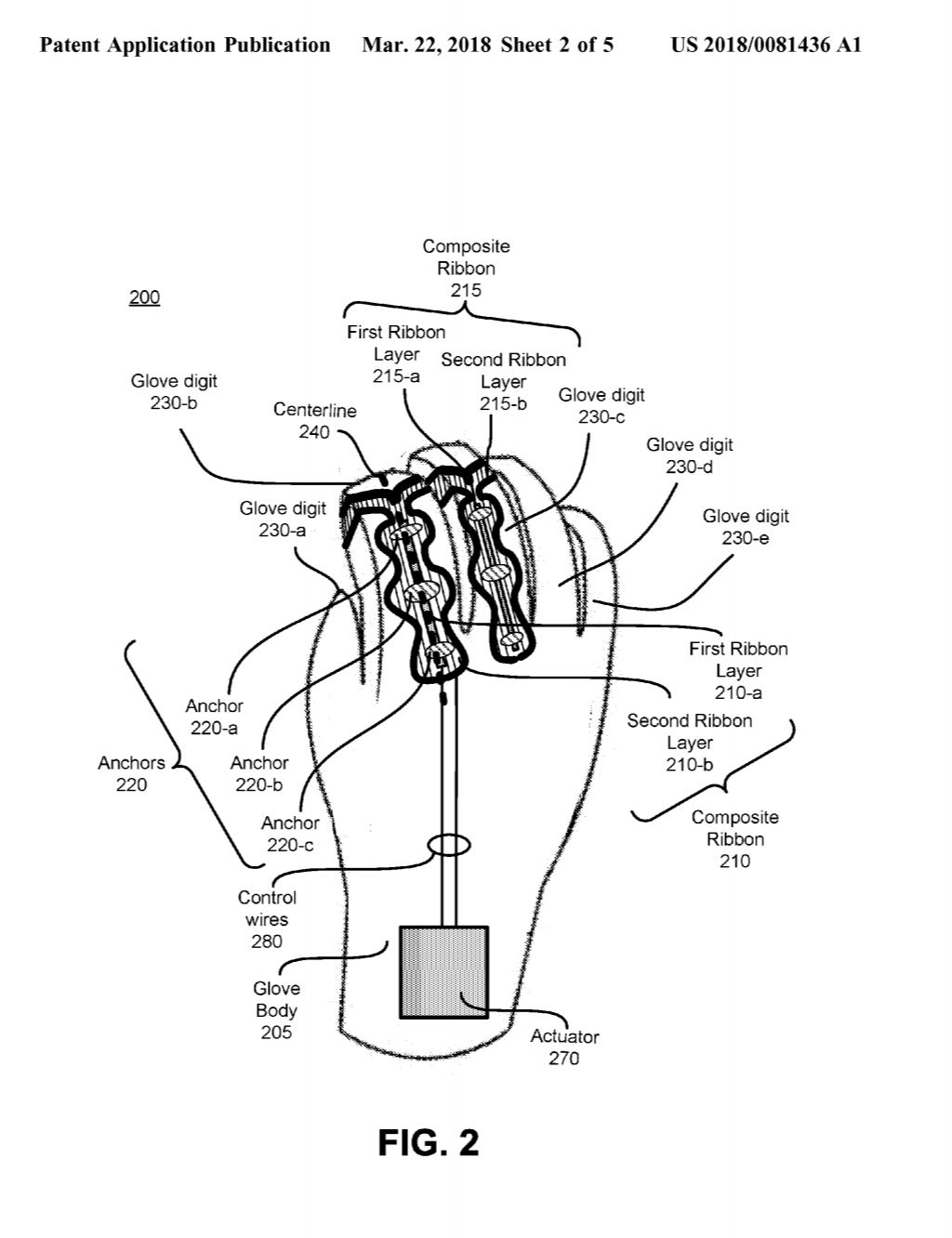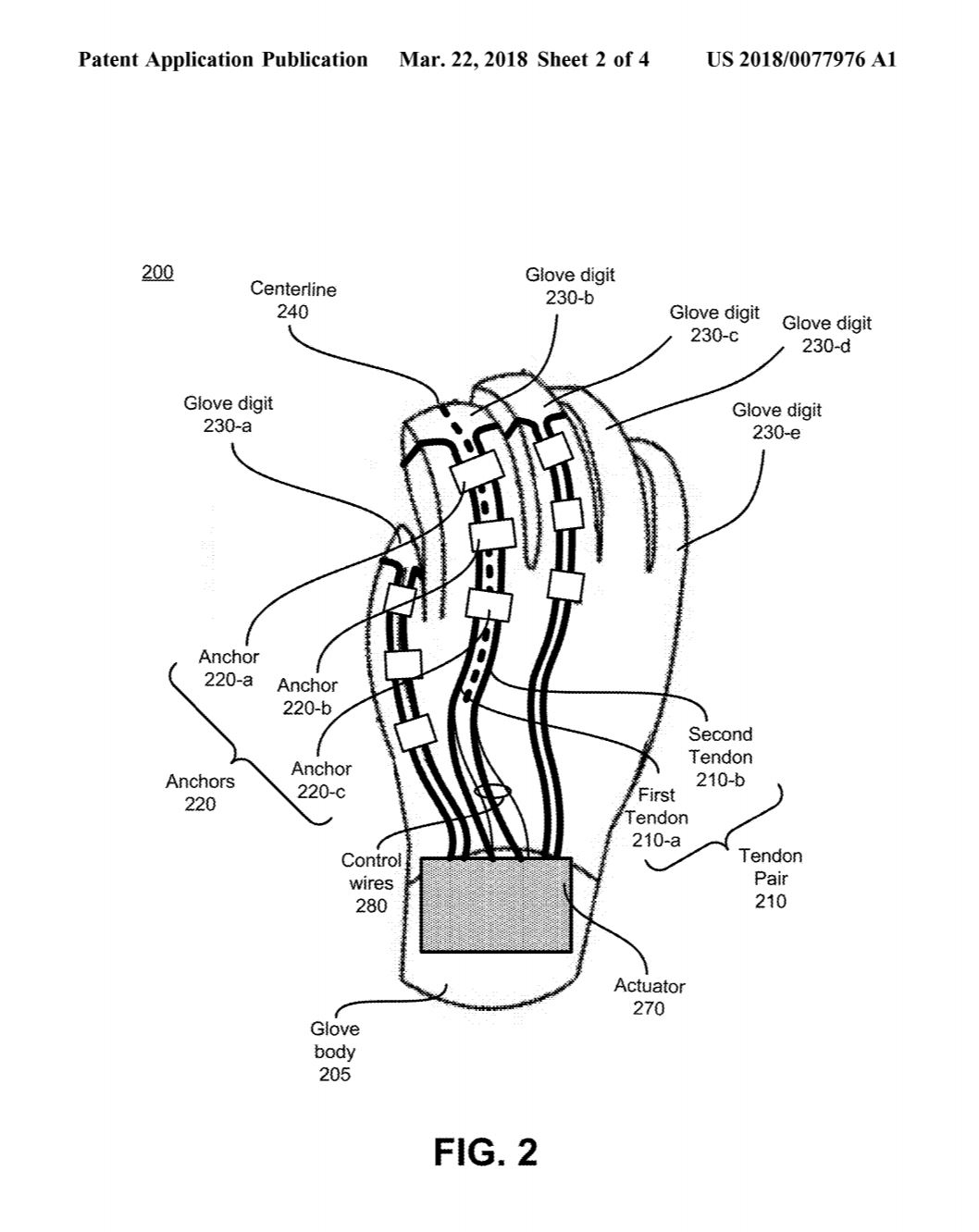Patents For Oculus Haptic Glove Surface Online
The United States Patent and Trademark Office (USPTO) recently published two patent applications from Oculus VR, LLC. for haptic VR glove technology, as reported by Upload VR. The published documents give us insight into the potential future development of Oculus peripherals.
Last February, Facebook CEO Mark Zuckerberg wrote about his trip to the Oculus Research Lab in Redmond, Washington, which revealed the existence of an Oculus-developed glove peripheral for VR.
“We're working on new ways to bring your hands in virtual and augmented reality. Wearing these gloves, you can draw, type on a virtual keyboard, and even shoot webs like Spider-Man. That's what I'm doing here.” Zuckerberg wrote in his February 2017 post.
At the time, virtually nothing was known about Oculus’ prototype VR gloves, except that they exist and that they didn’t work with Oculus’ Constellation tracking system. The image of the prototype gloves revealed that Oculus’ internal research lab used an OptiTrack professional-grade tracking system at that stage of development.
With the release of Oculus’ patent applications, we now know quite a bit more about the company’s haptic gloves and how they work. The first document, application No. 15/270,222, highlights the function of “Actuated Tendon Pairs in a Virtual Reality Device.” The second document, patent application No. 15\270,225, explains the use of “Composite Ribbon in a Virtual Reality Device.”
Oculus’ patent applications describe the company’s idea for haptic feedback in virtual reality experiences. Oculus’s Actuated Tendon Pairs are flexible tendons that stretch across the bends in the digits of a pair of gloves. The gloves also include an actuator motor that controls the movement of the tendons to add resistance to your finger movements to simulate real objects in VR. The company’s other idea involves multiple layers of flexible composite ribbon with different elasticity rates stitched across the top of the glove's digits. The extra tension is regulated by an actuator, which is installed on the base of the glove near the wrist.


Oculus filed both patent applications on September 20, 2016, which would fit the timeline of a working prototype demonstration in February 2017. However, aside from the image Zuckerberg posted more than a year ago, we’ve not heard Oculus discuss bringing a haptic glove to market. If we were to guess, we’d expect the haptic glove to be part of the next-generation of VR hardware, which we don’t expect from Oculus any time soon. The company is currently committed to bringing the Oculus Go standalone headset to market, and next in line is the Santa Cruz high-end standalone HMD, which we already know will include wands like the Touch controllers.
Get Tom's Hardware's best news and in-depth reviews, straight to your inbox.
We’re not sure where haptic gloves would fit into Oculus’ product stack now unless the company releases them as an optional peripheral. But we’re pretty sure Oculus doesn’t want to fracture its user base again by introducing another input method that not everyone will use but which developers will have to support all the same, just like they did with the Touch controllers.
Kevin Carbotte is a contributing writer for Tom's Hardware who primarily covers VR and AR hardware. He has been writing for us for more than four years.
-
computerguy72 Why does Oculus patent anything considering they are the slowest to market with new stuff of any company in many years. They are the DukeNukem of our time.Reply -
Specter0420 This would be awesome for flight sims like DCS World. You could use your expensive HOTAS to fly with precision and then reach up and flip switches with your fingers, just like real life.Reply -
dabeargrowls Wearing the headset is hot enough, now having to wear steamy gloves....ohh ya, can't wait! How about putting small fan implants that circulate air around the face?Reply
